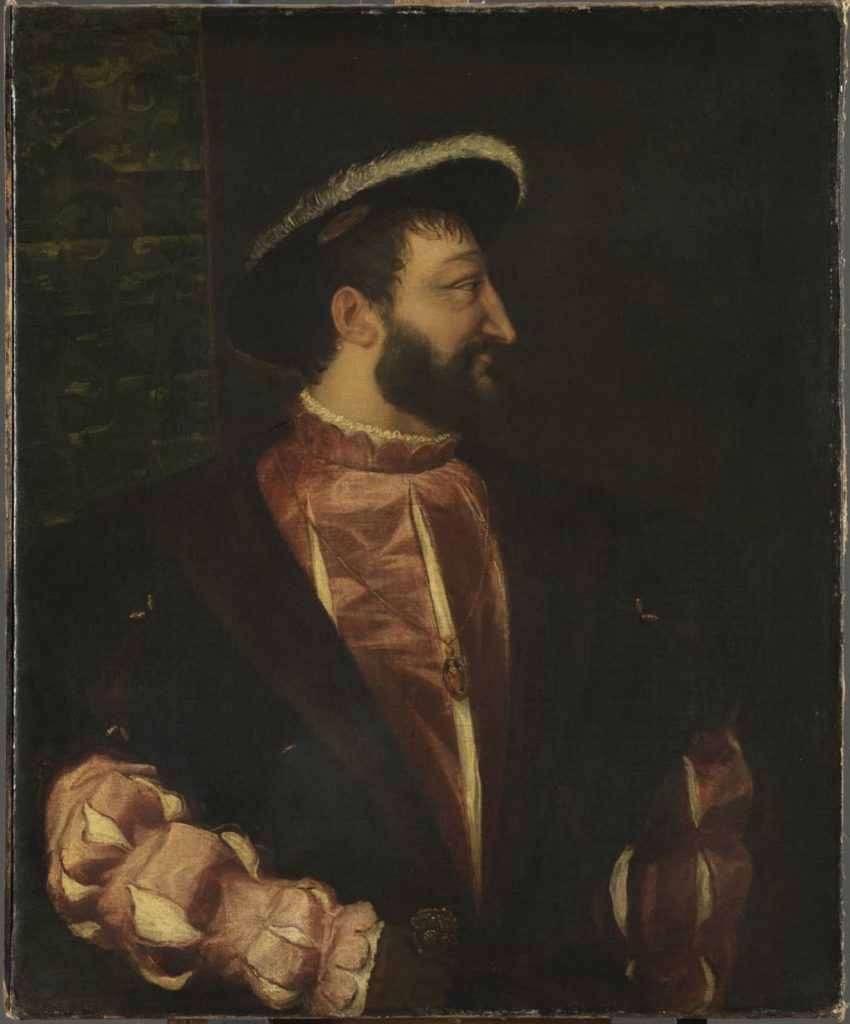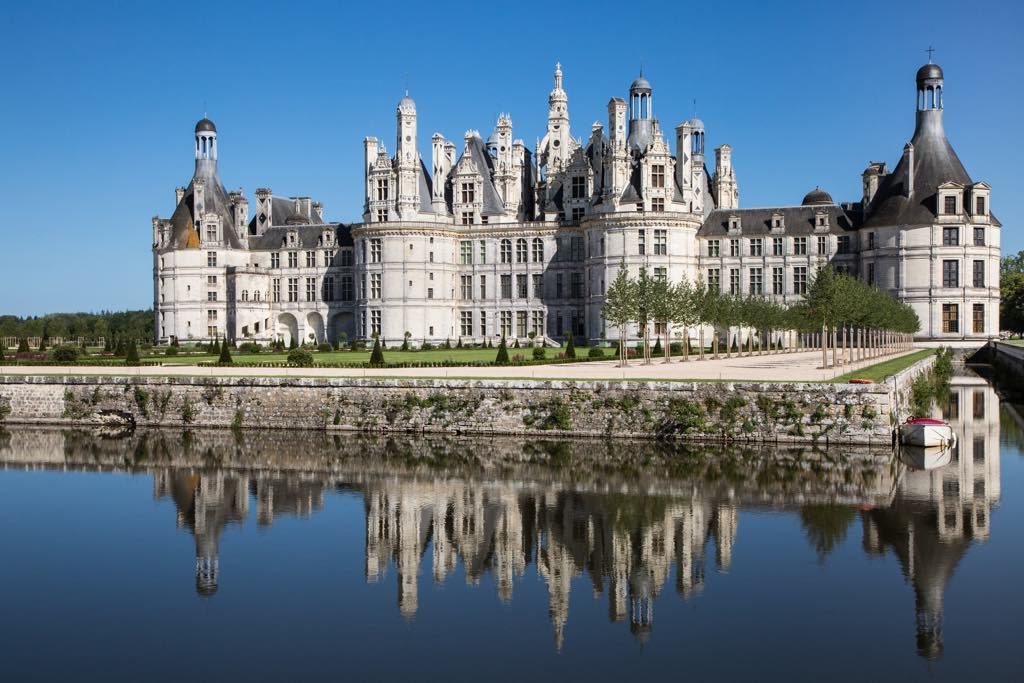The Château de Chambord is probably the most extraordinary of the Loire Valley châteaux, its massive structure and dozens of mismatched rooftop turrets and chimneys rising dramatically from its flat setting. There has never been much to see inside, however, except the famous double-spiral staircase, often attributed to Leonardo da Vinci. Now an ambitious exhibition called “Chambord, 1519-2019: L’Utopie à l’Œuvre (“Building Utopia”), distributed among some of the structure’s 440 rooms, is being held to celebrate the 500th anniversary of François I’s grand Renaissance château.

The show opens with the antecedents of the château’s symmetrical four-sided shape, similar to the form of the heavenly Jerusalem described in the Book of Revelation, with three gates on each side and four corner towers facing the four cardinal points. These ideal cities, illustrated here by numerous illuminated manuscripts, paintings and drawings, probably provided inspiration for the design of Chambord.
The bellicose François, a great patron of the arts who wanted only the best for his many châteaux, imported leading artisans and artists from Italy, cradle of the Renaissance, to work on them. Among them was Leonardo, who did not directly contribute to Chambord but whose urban planning and architectural sketches, and discussions with François may well have provided inspiration for many aspects of the château’s design. Facsimiles of pages from his Codex Atlanticus detailing some of his ingenious building schemes – including a plan for a two-tiered city that would, in turn, inspire Le Corbusier and other modernists in the 20th century – are on show here.

The role of François in the building of Chambord is another focus of the exhibition. This builder-king was not only physically large for his time (he was six feet, five inches tall), but was also grandiose, portrayed as a defender of chivalry and Christendom. Images of him in the exhibition include a wonderful profile portrait by Titian in which he appears to be laughing. While most of the iconography is reverential, there is also a little gem on show: a presumed caricature of the king, attributing the strength of “Arcules” to him, sketched (by a bored clerk?) in an accounting ledger.
François wanted to leave a strong architectural legacy, and his building ambitions were not limited to Chambord, although it was the only château built from the ground up under his rule. He initiated the renovation and rebuilding of 10 other châteaux – including Fontainebleau, Saint Germain-en-Laye, Amboise, Blois and the Louvre – and took a personal interest in them, often going so far as to draw up plans himself, taking on the role of architect, a new profession that had recently been invented in Italy (until then, “master masons” were in charge, as they still were at Chambord – no one architect other than the king has been identified for the château). Chambord may have been his proudest architectural achievement.
To understand the genesis of Chambord’s design, don’t miss the six-minute film presentation, which has English subtitles (unusually, all of the exhibition’s texts, even the labels, are translated into English). It also provides a good summary of the exhibition’s main points.
Since Chambord was unfinished when François I died in 1547, the curators decided to look not only at the château’s past but also its future by presenting 18 projects designed by architecture students around the world to reinvent Chambord as a modern utopia. Climate change figures large in their plans, some of which envision the building as a refuge for climate-change refugees or for local people whose homes have been destroyed by rising water levels.
Note: the Festival de Chambord will take place June 18-July 13, 2019. A ticket to one of the classical or jazz concerts is also good for entry to the château and the exhibition.
Favorite


Absolutely love this château, especially when you realize that it was built well before Australia was discovered. The double staircase leaves me in awe.
Chateau de Chenonceau runs a very close second, also magnifique.